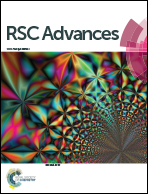Manipulating the magnetic moment in phosphorene by lanthanide atom doping: a first-principle study
Abstract
The structure and magnetism of Ln-doped phosphorene (Ln = La, Ce, Pr, Nd, Pm, Eu and Gd) have been investigated using the GGA + U method. It was found that all the single lanthanide atoms can bond strongly to the phosphorene and the Ln-doped phosphorene shows high and tunable magnetism. The magnetic moment in the range from 1 μB to 7 μB in Ln-doped phosphorene was proportional to the number of spin-parallel 4f electrons in the Ln atoms and achieves the maximum of 7 μB for the Eu- and Gd-doped cases, over all the magnetic moments of the known main-group atom and transition metal absorbed or doped phosphorene. Spin density and Bader charge analyses show that the magnetic moments of the Ln-doped systems mainly originate from the 4f electrons of the Ln atoms. Both the band structure and density of states indicate that most of the Ln-doped cases still maintain their semiconductor behavior with band gap values (about 0.90 eV) close to that found for the pristine phosphorene, except the Pm-doped case with the smallest band gap of 0.77 eV. Interestingly, in the Eu-doped case, the Eu atom induces hole doping, which produces a band crossing the Fermi level. The present study suggests that Ln-doped phosphorene can be used as a potential next-generation dilute magnetic semiconductor.


 Please wait while we load your content...
Please wait while we load your content...